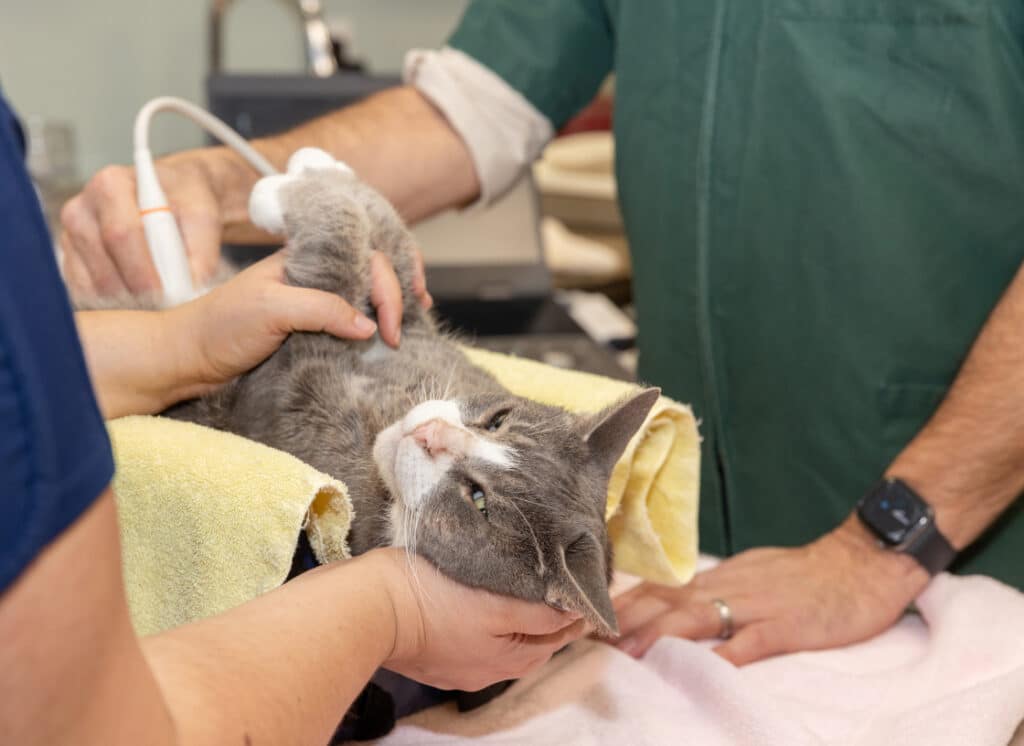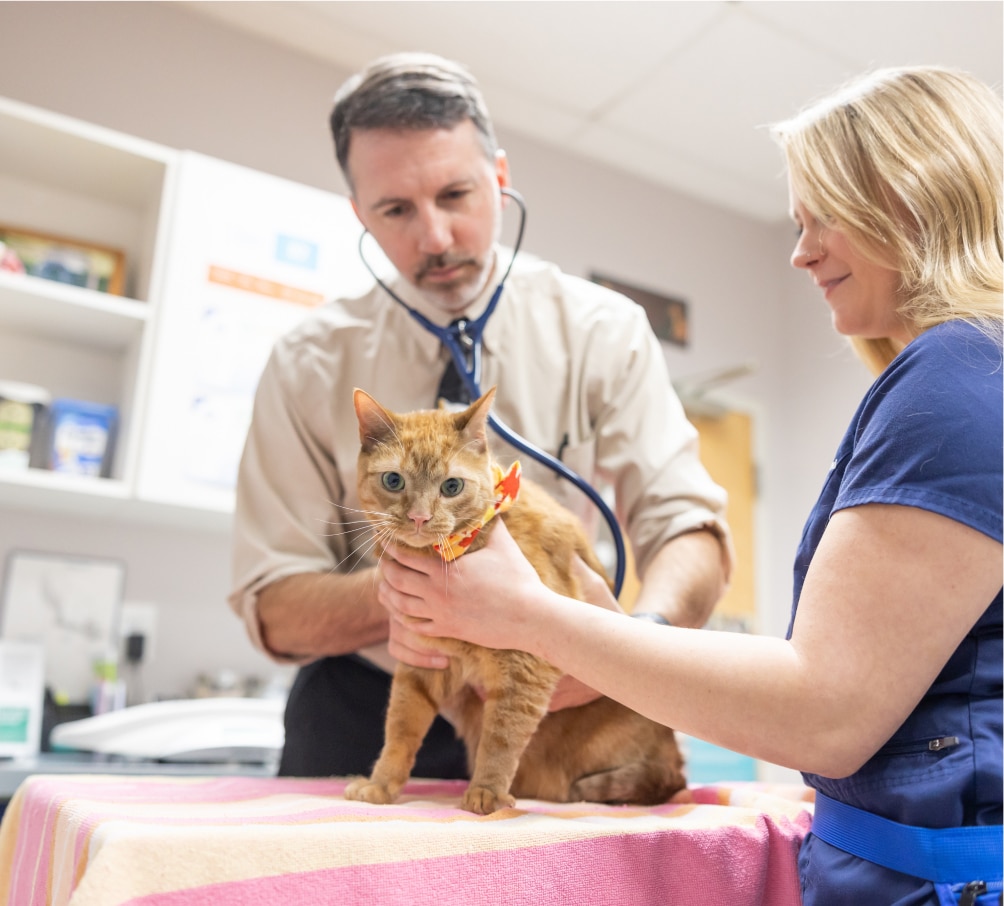Point of Care Ultrasound
Old Farm Veterinary Hospital has a state-of-the-art portable ultrasound. The veterinarians have special training in Point of Care and Diagnostic Ultrasound. The on-site availability of ultrasound allows immediate and accurate diagnosis of many conditions.
- Non-invasive and painless: Ultrasound is a non-invasive imaging technique that doesn’t require any needles or incisions, making it a painless and stress-free experience for your pet.
- Real-time imaging: Ultrasound provides real time images of internal organs, allowing your veterinarian to quickly and accurately diagnose a wide range of conditions.
- Improved accuracy: Ultrasound can help improve the accuracy of diagnoses by providing detailed images of internal organs which can help the veterinarian identify potential issues that may not be visible on radiographs or other imaging techniques.
- Reduced Stress: By providing a non-invasive and painless way to diagnose a variety of conditions, ultrasound can help reduce the stress and anxiety that pets may experience during a veterinary visit.
When necessary, Old Farm Veterinary Hospital utilizes the services of an imaging specialist when your pet requires the most expert opinion.


Schedule an Appointment With Us Today!
Your pet’s health and happiness is our priority. Press below to schedule an appointment with our pet care team.

